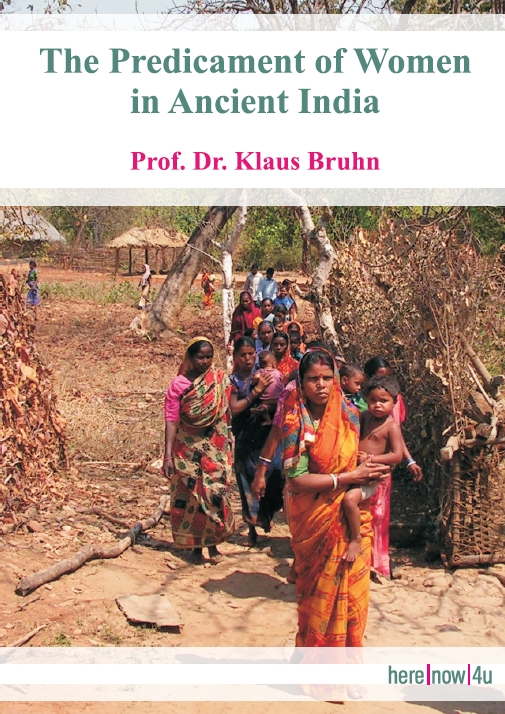Female infanticide seems to be mentioned in three related but not identical early, in this case Vedic, sentences (1-3). The three sentences refer to childbirth, and in each case it is said that "they" throw a daughter aside ('abandon, expel, reject'). By contrast it is said that "they" lift up a son (1) and that "they" do not throw a son aside (2-3). E.g. (1): "... they deposit [throw away] a daughter on birth, a son they lift up" (the two other texts accordingly); SYED To 87. The custom may be female infanticide (by exposure) or, more likely, a symbolical act indicating the inferiority of a female. ALTEKAR 7-8; SYED To 87-90; KANE 509. Under the circumstances, the three sentences are not sufficient indications of female infanticide in pre-epic times. In the epic we have "no decisive evidence for the exposure of female babies" (BROCKINGTON 224). Manu does not forbid (does not mention) female infanticide. Non-institutional, private infanticide does not appear in the texts. That the three sentences give expression to a low estimate of the female sex is nevertheless obvious.According to the law-books abortion is a great crime. There are mutually related lists of great crimes including abortion, murder of the husband, murder of a Brahman and sexual intercourse with a man of a lower caste (SYED To 71). Abortion is close to himsa (violence, the opposite of ahimsa or non-violence). It destroys a human being (male or female), also a fetus. The demands of the ancestors (pitris) are not mentioned in this context, and the sex of the fetus was not known in ancient days. But Manu (11.88) mentions abortion in a list of crimes, adding that abortion is a crime if the sex of the fetus cannot be identified (?):
One must perform the same observance [aforementioned atonement] for killing an unknown [!] fetus, a Ksatriya or a Vaisya who is engaged in a sacrifice, or an atreyi [§ 8.9].
Punishment for abortion is severe, inter alia exclusion of the woman from the caste. Evidence for abortion is limited in ancient India, but the existence of the practice follows from the numerous prohibitions. -- Refer for abortion in ancient India to SYED To 71-74 and to WEZLER Bh: 636, footnote 78 (bibliographical references); see also Manu 5.90 (women who "harm their fetus or husband").
Traditional India and modern India.
R.SYED states that female infanticide is found in many parts of the country, but always restricted to certain groups which present only a small part of the population (To 83-84). See SYED To on Tamil Nadu (86) and Rajasthan (86-87); a certain Venkatramani reports on the poisoning of new-born girls in a caste in Tamil Nadu (SYED To 84), and WEINBERGER reports on the conditions in the Shekhavati District of Rajasthan (190, footnote 37). R.DUBE has studied the changes in the course of time (DUBE Chapter 1).
Female infanticide was in modern time not eradicated, but largely replaced by other methods of eliminating female progeny: abortion and neglect; see WICHTERICH 103-112 and WEINBERGER 265. According to rough estimates, more than two million or even five million female foeticides take place in India per annum (SYED To 65: 1999; this against a population of more than one billion). Prenatal diagnostic techniques (SYED To 66, 45-47) make abortion of female fetuses nowadays practicable (abortion of male fetuses hardly exists). However, due to the high cost, female infanticide is to some extent preferred to abortion in the hospitals. The sex ratios reflect the female survival chances: 1981, Kerala 1,032: 1,000; Punjab 879: 1,000. (FORBES 238)
Substantial dowry (supra) almost automatically induces abortion and female infanticide. Whatever dowry meant in old times, it probably existed in one form or another; the extensive employment of female infanticide in most parts of India has not shot up over night. There might have been several reasons, but a basic reason like dowry cannot be ruled out. Women are at any rate an "endangered population" (WEINBERGER 265). Early reports on female infanticide (Mughal period?) are mentioned but rarely; infanticide was no subject for travellers.
 Prof. Dr. Klaus Bruhn
Prof. Dr. Klaus Bruhn
 Title Photo Background:
Title Photo Background: